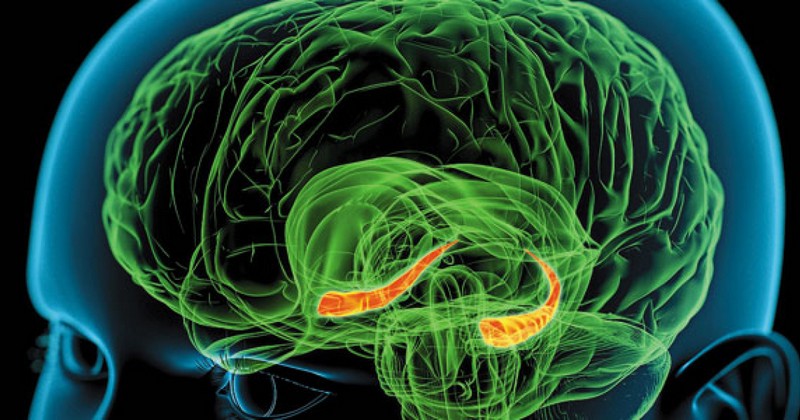Hippocampus: functions and structure of the memory organ.

In what mental processes is this area of the brain involved?
The hippocampus is one of the most important parts of the brain.
It is located in what is known as the limbic limbic system, and is closely related both to mental processes related to memory and to those that have to do with the production and regulation of emotional states, as well as being involved in spatial navigation, that is, the way in which we imagine movement through a specific space.
The anatomy of the hippocampus
The etymology of the term "hippocampus", a word coined by the anatomist Giulio Cesare Aranziorefers to the resemblance between this structure of the brain and a seahorse. It is a a small organ with a curved and elongated shape, which is located in the inner part of the temporal lobe and runs from the hypothalamus to the amygdala. Therefore, each brain has two hippocampi: one in each hemisphere of the brain.
In addition, the hippocampus is associated with a part of the cerebral cortex known as the archicortex, which is one of the most ancestral regions of the human brain; that is, it appeared many millions of years ago in our evolutionary line. That is why the hippocampus is so well connected to other parts of the limbic system, which appeared to provide answers to some of the most basic needs of our most remote mammalian ancestors. In turn, this fact already allows us to intuit that mental processes related to emotions are linked to hippocampal functions. Let's see what they are.
The functions of the hippocampus
The main function of the hippocampus is to mediate the generation and retrieval of memories in conjunction with many areas scattered throughout the brain. in conjunction with many areas scattered throughout the cortex and with other areas of the limbic system.
Therefore, it plays a very important role in the consolidation of learning, since on the one hand it allows certain information to pass into long-term memory and on the other hand it links this type of content with certain positive or negative values, depending on whether these memories have been associated with pleasurable or painful experiences (physiologically or psychologically).
These are mental processes linked to emotion that determine whether the value of an experience stored as a memory is positive or negative. What we experience as emotions has a functional part that has to do with the way we learn to behave following learned rules that play in our favor: to avoid repeating mistakes and to re-experience pleasant sensations.
The hippocampus and memory
It might be thought that The hippocampus is the part of the brain where long-term memories are stored.. However, the reality is more complex than this idea.
The relationship between the hippocampus and long-term memories is not so direct: this organ acts as a mediator, or directory, of memories.Its appearance and disappearance is associated, according to what is known about the functioning of memory, with the activation and deactivation of networks of neurons distributed in many areas of the brain. In other words, the hippocampus does not "contain" memories, but acts as an activation node that allows different memories distributed in different parts of the brain to be activated.
Moreover, the hippocampus is more related to some types of memory than to others. Specifically, the hippocampus plays a role in the management of memory, plays a role in the management of declarative memory.However, non-declarative memory, which is involved in the memorization of movement patterns and motor skills (such as dancing or cycling), is regulated more by structures such as the basal ganglia and the cerebellum.
It is known that a lesion in this area of the brain usually produces anterograde and retrograde amnesia in the production and recall of memories related to declarative memory, but non-declarative memory is usually preserved. A person with a severely damaged hippocampus can still learn, for example, manual skills (although he or she would not remember learning this process).
The hippocampus in spatial navigation
From what is known about the hippocampus, this brain structure also appears to be involved in spatial navigation, this brain structure also appears to be involved in the way we perceive space.The hippocampus, that is, the way in which we keep in mind a three-dimensional space through which we move, taking into account its volumes and references.
In fact, inside the hippocampus a type of neurons called place cells have been discovered, about which you can read more in this article.
The hippocampus under disease
The region of the hippocampal formation is one of the first areas in which diseases such as dementia or Alzheimer's. This is why people who begin to experience this disease see their ability to form new memories or recall more or less recent autobiographical information diminished.
However, even if the hippocampus is severely damaged, usually the oldest and most relevant memories of the person's life take a long time to fade.This could mean that with the passage of time the oldest and most relevant memories become more and more "independent" of the hippocampus.
Bibliographical references:
- López-Pousa S., Vilalta Franch J., Llinàs Reglà J. (2002). Manual de Demencias, 2nd Edition. Prous Science, Barcelona.
- Martínez Lage J.M., Láinez Andrés J.M. (2000). Alzheimer's disease: theory and practice. Aula médica ediciones, Madrid.
(Updated at Apr 14 / 2024)